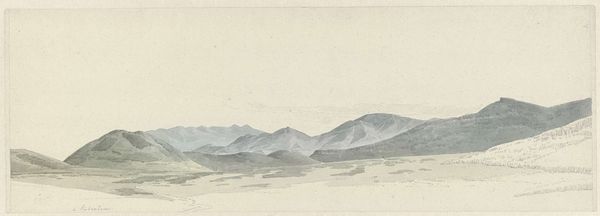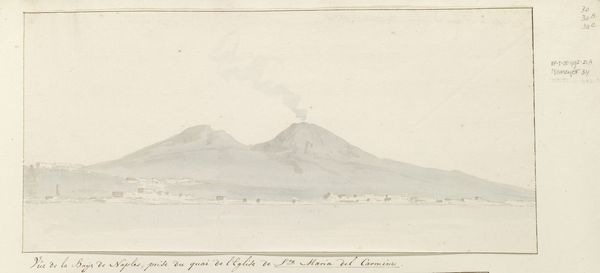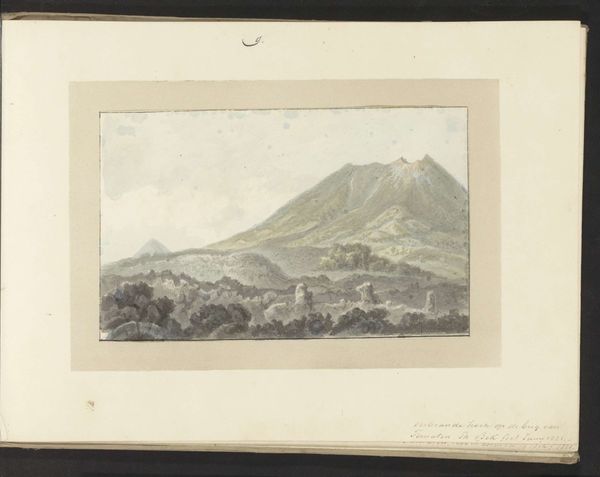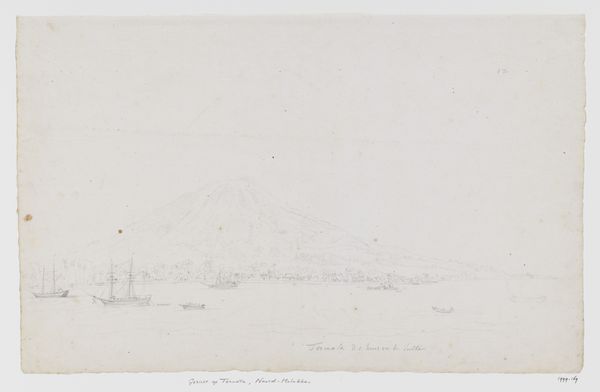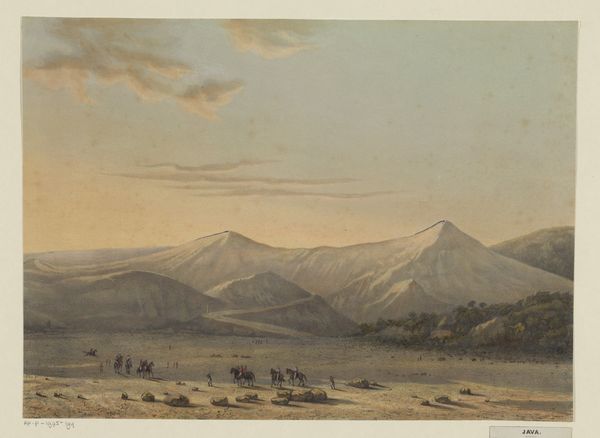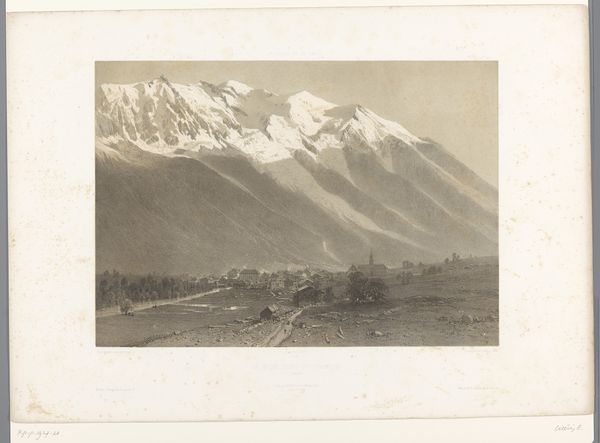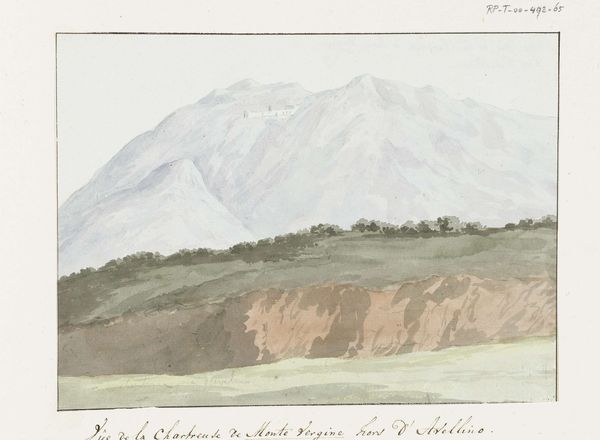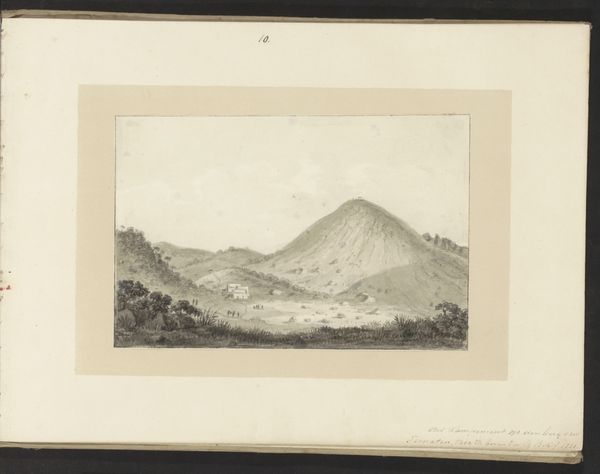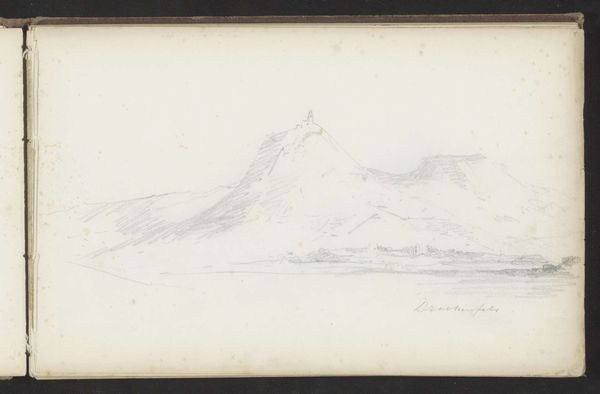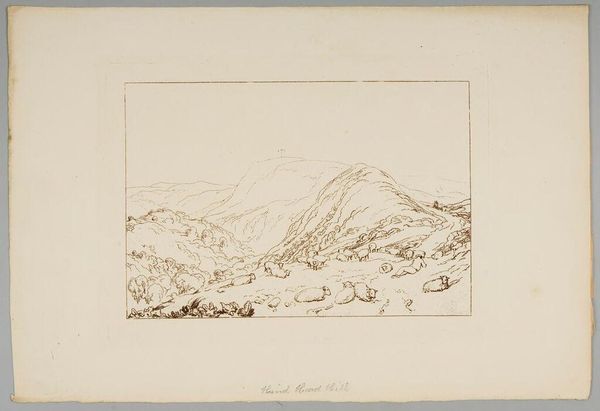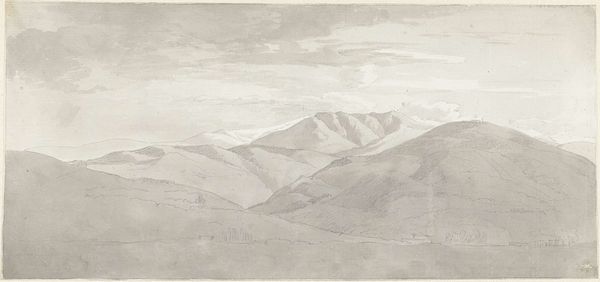
drawing, pencil
#
drawing
#
landscape
#
romanticism
#
mountain
#
pencil
#
realism
Dimensions: height 266 mm, width 430 mm
Copyright: Rijks Museum: Open Domain
Josephus Augustus Knip captured Mount Vesuvius with pencil and watercolor, offering a glimpse into the cultural fascination with the volcano. In the late 18th and early 19th centuries, Vesuvius was not just a geological feature; it was a symbol of nature's sublime power, attracting artists and tourists alike. Knip, born in the Netherlands, was part of a generation of artists who found inspiration in the natural world, often reflecting the Romantic era's emphasis on emotion and the grandeur of nature. "Mount Vesuvius" captures the volcano's imposing presence. It invites reflection on the human relationship with nature's destructive and creative forces. The artwork doesn't shy away from depicting Vesuvius as a central force shaping the landscape and the human experience. It’s a reminder of how natural phenomena intersect with our sense of identity, history, and place.
Comments
rijksmuseum about 2 years ago
⋮
In a succinct biography of 1819 Knip wrote: ‘I set out for Naples on 6 September 1811, and having seen the most beautiful sights I returned to winter in Rome with a good portfolio (of drawings) from that beautiful region.’ He more than likely made his drawings of Mount Vesuvius on this trip. Vesuvius is still an active volcano. It erupted twice during Knip’s lifetime, in 1794 and 1826.
Join the conversation
Join millions of artists and users on Artera today and experience the ultimate creative platform.
